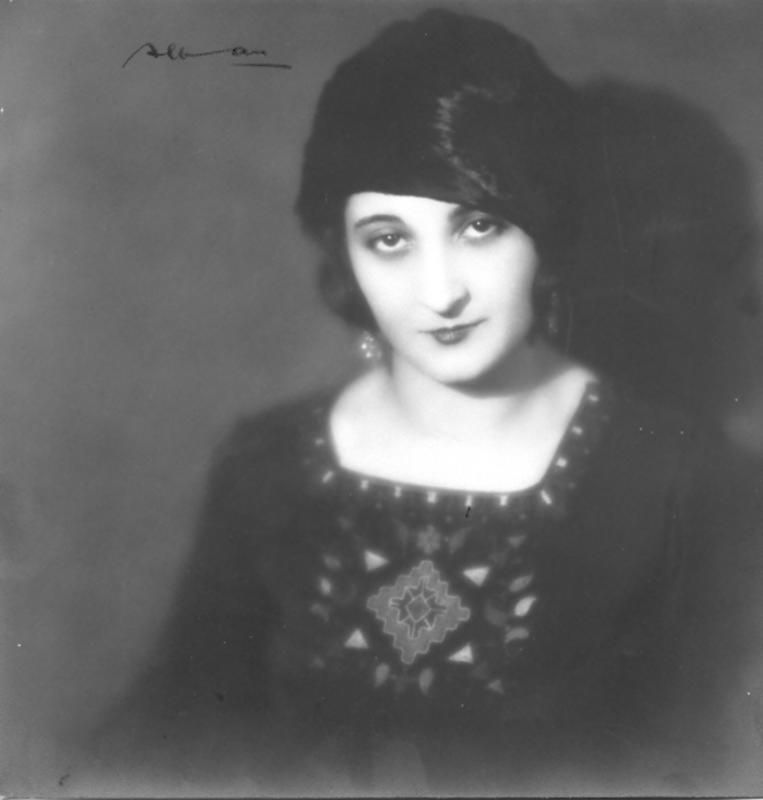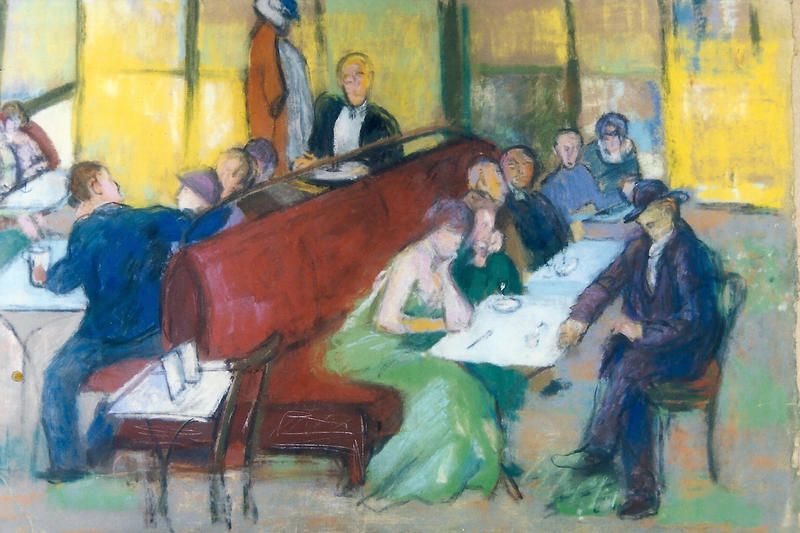Last-Minute NYC Holiday Gift Guide 🎁
We’ve created a holiday gift guide with presents for the intrepid New Yorker that should arrive just in time—


Housed inside the Gold Coast mansion of former steel magnate Henry Clay Frick, nestled among 145 bucolic acres of natural preserve once owned by poet William Cullen Bryant, and adjacent to a storybook cottage visited by Theodore Roosevelt, you will find the galleries of the Nassau County Museum of Art on One, Museum Dr. Located just 20 miles east of Manhattan in Long Island’s Roslyn Harbor, the NCMA is a hidden gem of the New York art world. The current exhibit, Anything Goes: The Jazz Age, curated by museum director Dr. Charles Riley II, features work by household names of the Roaring 20’s like Picasso, Fitzgerald, and Matisse and rare pieces like those from Brooklyn raised artist Anna Walinska, in a setting that fittingly evokes images of a lavish Gatsby-esque affair.
Designed by architect Ogden Codman Jr. and constructed in 1900, the brick, three-story Georgian mansion that now houses the museum’s exhibits was most famously owned by U.S. Steel Corporation co-founder Henry Clay Frick, but was originally built for attorney Lloyd Stephens Bryce. Codman Jr. had many famous and deep pocketed clients, including John D. Rockefeller for whom he designed interiors at Kykuit in the Hudson Valley, and Cornelius Vanderbilt II for whom he designed The Breakers, Vanderbilt’s massive summer home in Newport, Rhode Island. In 1919, Henry Clay Frick purchased Bryce’s property for his son Childs Frick and his son’s wife Frances. The Fricks hired British architect Sir Charles Carrick Allom to redesign the facade and interior of the building which they renamed Clayton.



Childs Frick and Frances had eclectic tastes, which are evident in their additions to the estate. Childs had a fervent interest in paleontology, zoology and botany, and so he built a monkey house, an aviary and a bear pit on the property. He also built Millstone Lab, named for the two large millstones at the entrance. The former lab now serves as the museum’s art studios. Mrs. Frick, on the other hand, was an avid horticulturist and garden club member. In 1935, she hired trailblazing female landscape architect Marian Cruger Coffin to help design a formal garden. Coffin set to work turning the neglected landscape into a lush and lively garden blooming with flowerbeds, walking paths, and hedges. Mirroring the design of the mansion, she created a vibrant display of plant life that took a crew of 22 gardeners to maintain. The gardens are continually cared for and restored based on photographs and Coffin’s original blueprints. Along with flowers, shrubbery and trees, the museum’s landscaping is now dotted with outdoor sculptures which guests discover as they amble about the grounds.
The land on which the estate was built was once owned by poet Willam Cullen Bryant as part of his “Upland Farm.” Bryant a lawyer, political activist, conservationist and preservationist as well as poet, purchased the land in 1845 and lived in the nearby estate of Cedarmere. Over the years, he constructed multiple buildings on his land including a small guest cottage in 1862, which he built for his writer friend Jershua Dewey. Other famous guests who stayed in Bryant’s cottage include former presidents Theodore Roosevelt and Woodrow Wilson. The cottage was subsequently used by the Bryces and Fricks, but fell into disrepair after the Fricks’ deaths in 1969. Nassau County is currently conducting restoration work with the Roslyn Landmark Society and the Gerry Charitable Trust to restore the cozy cottage’s wooden exterior. Today, Bryant’s land is now the William Cullen Bryant Preserve, which is comprised of the museum’s formal gardens, two ponds, a system of winding walking trails and natural forests containing a plethora of tree varieties including pine trees planted by Childs Fricks.
In 1969, Nassau County purchased the estate from the Frick family with the intention of creating an art museum and nature preserve. The estate has been operating as a museum since it became a non-for-profit institution in 1989. In addition to the outdoor sculpture park and main exhibition building, the art museum boast the Manes Family Arts and Educational Center where classes and workshops are held for artist of all ages. The building itself is also a work of art with an exterior graffiti mural painted by artist Kenny Scharf.
We recently had the opportunity to attend its current exhibit, Anything Goes: The Jazz Age, which is being presented alongside an array of events including jazz and cabaret performances and lectures series. Among the familiar names featured in the Jazz Age exhibit, the name of a lesser known female artist stands out. Anna Walinska was born in London and raised in Brooklyn, the daughter of labor leader Ossip Walinsky and sculptor/poet Rosa Newman, both social activists. Walinska knew from a young age that she wanted to be an artist, so at age 19, keenly aware of the burgeoning art scene overseas and eager to be a part of it, she set sail for Paris.

Anna Walinska. Image courtesy the Nassau County Museum of Art
In Paris, Walinska was in good company. She lived at 67 Rue Madame, across the street from Gertrude Stein, and studied with Andre L’Hote and at the Grande Chaumiere. “In the time of Matisse, Picasso, and Schoenberg’s music, the time of Hemingway’s A Moveable Feast

is indicative of a certain kind of daring and adventurousness that I’ve always had,” Walinska wrote of her time in Paris. Rosina Rubin, her niece, uses one word to describe how she imagines that time was for her aunt, “magical.” “It must have been a wonderful place to be with all these fascinating people,” and it was inspiring to the “shy young woman who wasn’t sure she could have her due there.”
When she returned from Paris, Walinska founded the Guild Art Gallery at 37 West 57th Street, where she gave artist Arshile Gorky his first one-man show in New York City. Among many other accomplishments she also served as the Assistant Creative Director of the Contemporary Art Pavilion at the 1939 World’s Fair. In 1954, she set off on a six month journey that would take her around the world and introduce her to new methods and materials that she would incorporate into her art. She documented her travels in a journal that is now part of the Smithsonian Archives of American Art, which will soon have a digital version on their website.

Paris Café by Anna Walinska 1929. Image courtesy the Nassau County Museum of Art
Until a stroke at the age of 90, Walinska painted throughout her life and created over 2,000 pieces of art, which she stored in her large Upper West Side apartment. After her death in 1997, her niece, Rubin, took on the role of curator and started the task of organizing and cataloguing all of the art. Growing up, Rubin was peripherally aware of her aunt’s work, but really came to know it as she sorted through the rooms and boxes full of what Walinska left behind. Ten months into the project, Rubin recalls finding a box, which fell out of the closet after she believed she had already “touched every piece in the apartment.” Inside, there was an assortment of aged papers from Paris, among them a sketched portrait with a signature in the corner that read Picasso. Rubin excitedly notified the appraiser who informed her that the piece was not by Picasso, but of Picasso. Rubin would come to learn that when Walinska drew portraits of other artists, she often wrote their name in the style of their signature. The Picasso sketch is on display in the NCMA exhibit in a gallery that features Walinska’s work exclusively.
Her extensive range of works is part of many pieces uncovered by the Nassau County Museum for this exhibit. Other rare items on display include a sketch by E.E. Cummings and the original painting that inspired the cover of F. Scott Fitzgerald’s masterpiece The Great Gatsby

, a piece Princeton rarely loans to other institutions. You can visit the NCMA year round and catch Anything Goes: The Jazz Age now through July 8th.

Next, check out 13 Lost Mansions of Long Island’s Gold Coast and 10 Historic Mansions to Visit on Long Island from the Gold Coast Era.
Subscribe to our newsletter